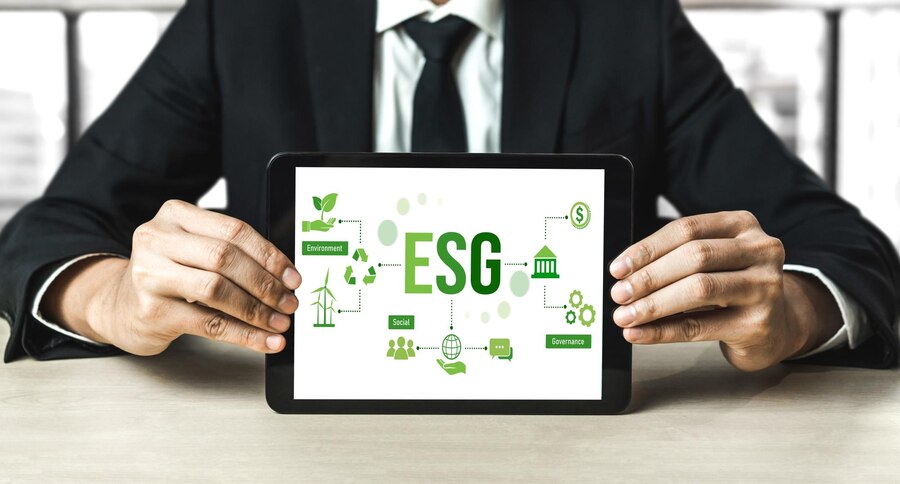Businesses around the world are increasingly being sensitized to the cause of sustainability. This means organizations are reflecting upon their purpose and revisiting their core strategies in the light of ESG – environment, sustainability, and governance. Their renewed operating models are no longer designed around individual profit maximization. Still, they are based on an ecosystem view – which comprises suppliers, partners, and stakeholders along the length and breadth of the supply chain. An ESG supply chain works as well-oiled machinery in not only delivering the business goals but also operating within the right ESG framework. It is important to understand how the supply chain ESG works and how best it can be leveraged for one’s organization.
What is ESG in Supply Chain Management?
The ESG principles and guidelines espouse a new and more conscious way of doing business. For instance, choosing the right supplier and being environmentally correct in working with carbon-neutral partners helps shape an organization’s carbon footprint and underscores its commitment to the future. By being ESG compliant an organization adopts certain frameworks and guidelines in doing business in a more socially and environmentally responsible way.
The current focus on the ESG supply chain establishes a network of upstream and downstream partners who are aligned in doing business and mitigating potential risks to the environment or society. In this way a supply chain ESG drives better performance regarding ESG goals across all trade partners. However, it is important to note that supply chain ESG is not always easy to implement. Especially when working on a global scale with multiple countries, regulations, and cultures. Deploying the correct combination of people, processes, and technology can help circumvent these implementation challenges.
Benefits of ESG in Supply Chain
There are several benefits underlying the successful setup of supply chain ESG.
- The biggest benefit is increased customer trust and positive sentiment of stakeholders and regulators. This directly translates into better brand reputation and increased business for the organization.
- When implemented right ESG and supply chain work in a symbiotic relationship to drive business excellence and improve overall quality of products and services with de-risking of operations.
- The next benefit is the creation of supply chain efficiencies. By becoming ESG compliant, the supply chain effectively reduces its waste and invests in circular business practices. Newer technology is invested in and the overall loss is minimized. This has a tangible impact on the business profitability and the overall supply chain which is now more robust.
- Finally, ESG in the supply chain creates a promise of a better tomorrow and future proofs a business from potential shocks in the future. For instance, moving to alternate greener sources of energy, insulates a business from the risk of supply shocks in conventional energy such as crude oil or other fossil fuels.
Best Practices for Implementing ESG in Your Supply Chain
Implementing ESG in the supply chain involves taking a holistic view of things. Some practice recommendations follow.
- The first step is to set up processes and systems to gather data, monitor performance, and raise alarms/ flags for non-performance of essential steps. This can be achieved through a combination of process definition, change management, and technology adoption.
- Setting up a framework for evaluating suppliers and trade partners is also key. It involves gathering essential ESG data and filtering out non-performers for objective fact-based selection of the correct vendors.
- Developing effective supplier engagement and management programs will ensure that the contracts are well managed and the partner performance is optimized. For instance, setting up ESG-focused supplier rating mechanisms can transparently drive purchase decisions.
- Finally, all the above parameters need to be woven into a comprehensive ESG strategy that evolves and progresses with the needs of the business and changes in the regulatory landscape.
Challenges and Solutions in Implementing ESG in Supply Chains
The ESG and supply chain world is complex and ever-evolving. Navigating the complexities presents its own set of unique problems and related solutions.
- Partnership with the correct subject matter experts will ensure that the organization is always aware of the latest changes and can tune its strategy accordingly.
- There is a pressing need for transparency and management accountability when it comes to ESG and supply chains. By investing in proper processes and setting up professional supply chain audit mechanisms, an organization can not only make its ESG compliance more credible but also ensure any potential inefficiencies are easily detected and appropriately addressed.
- Appropriate tools and technologies are difficult to adopt due to their complexity and the degree of change involved. An incremental approach helps here by making calibrated shifts to the target state. Involving an ESG-focused change management partner can also help.
Conclusion
ESG in the supply chain is a new concept but is gaining major traction due to the positive impact it has on global business performance and the sustainable outcomes that can result from it. Implementing best practices in consultation with experts can unlock tangible value opportunities for businesses and make them more resistant to shocks from future regulatory changes. In the current state, businesses that have implemented ESG in their supply chains are more efficient and report lesser losses in their production process.
FAQ
Why is ESG important in supply chains?
ESG in the supply chain deploys best practices related to environment, sustainability, and governance across the length and breadth of the supply chain. It ensures that a business and its suppliers, partners, and customers are all compliant with the new ESG standards and regulations that are being set up. As a result, an entire ecosystem of compliant businesses is created which solves today’s problems and works towards a better future.
What are the ESG metrics of the supply chain?
The actual ESG metrics depend on the nature of the business and the supply chain partners. However, some critical metrics are energy efficiency, water usage, carbon footprint, diversity/ inclusion index, employee satisfaction index, vendor audit rating, and corporate governance reviews. Using these metrics businesses can develop their own ESG scorecards and monitor their performance in respect of ESG and supply chain.







